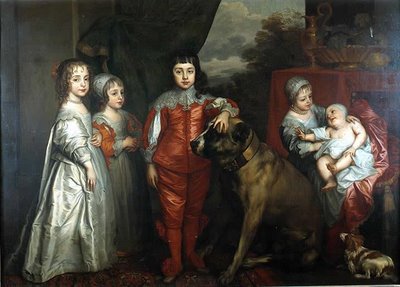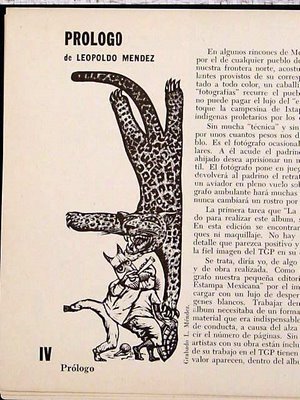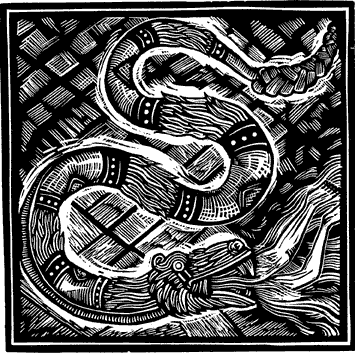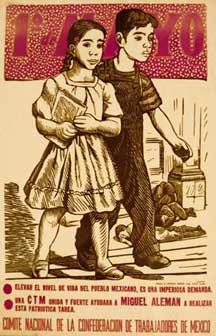
From the Huntington Art Gallery:
Jonathan Buttall: The Blue Boy (c 1770)
Thomas Gainsborough (1727-88)
oil on canvas, 70 5/8 x 48 3/4 inches
The best known painting at the Huntington, Gainsborough's The Blue Boy, portrays Jonathan Buttall, the son of a successful hardware merchant, who was a close friend of the artist. The work was executed during Gainsborough's extended stay in Bath before he finally settled in London in 1774.
The artist has dressed the young man in a costume dating from about 140 years before the portrait was painted. This type of costume was familiar through the portraits of the great Flemish painter, Anthony van Dyck (1559-1641), who was resident in England during the early 17th century. Gainsborough greatly admired the work of Van Dyck and seems to have conceived The Blue Boy as an act of homage to that master.
The cool thing about this painting is that Gainsborough used this painting to showcase his ability to paint something more than what he was being hired to paint (the ladies in the white dresses a bit off center with very sketchy backgrounds and to my thinking, some fairly simple and quiet lighting solutions. This was a piece to raise the bar and say, "hey, I can do this too!".
Wiki illuminates an aspect of the story:
It was often rumored that Gainsborough painted the portrait in response to rival Joshua Reynolds,who had once written:
It ought, in my opinion, to be indispensably observed, that the masses of light in a picture be always of a warm, mellow colour, yellow, red, or the green colours be kept almost entirely out of these masses, and be used only to support or set off these warm colours; and for this purpose, a small proportion of cold colour will be sufficient. Let this conduct be reversed: let the light be cold, and the surrounding colour warm, as we often see in the works of the Roman and Florentine painters, and it will be out of the power of art, even in the hands of Rubens and Titian, to make a picture splendid and harmonious.

The children of King Charles I of England in 1637 by Van Dyck. From left: Mary, James - unbreeched at four, Charles, Elizabeth and Anne.
So, Blue Boy was a sample. And what a sample to observe up close, the way the satin is rendered in all manner of color and brushwork. I wonder if it helped to move his work with the clientele? I wonder if it made his peers gasp! and applaud his ability to shift his work this way.
My great surprise, my gasp is that this is the same Gainsborough painted one of my favorite English paintings--Mr and Mrs. Andrews. This painting was early in his career allowing him to showcase his love and abilities with the landscape. This painting depicts a pair of newly weds and the property that Mr. Andrews owned cojoined with then new property that became his upon his marriage to the fair Frances Carter of Ballingdon House. It was painted in November, a time of harvest and visual plenty which perhaps linked to the marriage and it's wealth (?).
I love Gainsborough's children's bookie exaggeration, the use of color and placement on the canvas. This picture flopped would make a perfect bookjacket cover for an english romp--I love the "whatch looking at" face that Mrs. Andrews calmly presents to us, and the relaxed manner of the man of the household. The dog is asking for something to do. And the Missus is thinking, "goodness, I wish I could get some shoes that fit, these tiny things pinch". Plus, she is painting a picture on her lap. Have you ever been able to do that without a hard surface underneath? The National Gallery site suggests the painting would have been a placeholder for the baby to come. Huh..?
These are the Gainsborough's I love...less the court paintings (which as a category, I adore...but I am easily humored). These little english tales as rendered by a storyteller painter in a spare english palette of pinks and blues. This is the England of literature and private, spare romance. This is the sweet England of the happy rich who revel in " a longish walk", who hunt and love their dogs, and cultivated ladies--who as articulated by Jane Austen (50 years earlier--but true to the english essence) in her book Pride and Prejudice on the accomplishments of ladies:
``It is amazing to me,'' said Bingley, ``how young ladies can have patience to be so very accomplished as they all are.''
``All young ladies accomplished! My dear Charles, what do you mean?''
``Yes all of them, I think. They all paint tables, cover screens, and net purses. I scarcely know any one who cannot do all this, and I am sure I never heard a young lady spoken of for the first time, without being informed that she was very accomplished.''
``Your list of the common extent of accomplishments,'' said Darcy, ``has too much truth. The word is applied to many a woman who deserves it no otherwise than by netting a purse, or covering a skreen. But I am very far from agreeing with you in your estimation of ladies in general. I cannot boast of knowing more than half a dozen, in the whole range of my acquaintance, that are really accomplished.''
``Nor I, I am sure,'' said Miss Bingley.
``Then,'' observed Elizabeth, ``you must comprehend a great deal in your idea of an accomplished women.''
``Yes; I do comprehend a great deal in it.''
``Oh! certainly,'' cried his faithful assistant, ``no one can be really esteemed accomplished, who does not greatly surpass what is usually met with. A woman must have a thorough knowledge of music, singing, drawing, dancing, and the modern languages, to deserve the word; and besides all this, she must possess a certain something in her air and manner of walking, the tone of her voice, her address and expressions, or the word will be but half deserved.''
``All this she must possess,'' added Darcy, ``and to all this she must yet add something more substantial, in the improvement of her mind by extensive reading.''
``I am no longer surprised at your knowing only six accomplished women. I rather wonder now at your knowing any.''
This is the climate of English perfection these storybook paintings can be derivative of...the character studies, the manners and cultivation of the quiet, country wealthy that charms me as they link so much to the world of Jane Austen, Mrs. Gaskill (
Wives and Daughters). The stories
as depicted by Gainsborough are more informed by the world he lived in (he married an illegitimate daughter of a member of the aristocracy who settled 200 pounds per annum on her at her marriage). In the context of Jane Austen, 100 pounds per year was what Mr. Bingley had settled on him in Pride and Prejudice. He could live well without working and support a wife, his sisters in a large manor house. So, Gainsborough didn't need to paint to pay the bills--and with that, it gave him the entree to that upper crust world that many of his portraits of the Royals portray.
Interesting to think about. And, don't quit the day job confirmation--either that, or marry well.
I need to go and work on my accomplishments. Walking with a certain air, today? or should I cover screens and net bags?

Mr and Mrs Andrews
about 1750
National Gallery of Art, London

John Plampin.
About 1753-4.
Oil on canvas.
National Gallery, London, UK

























